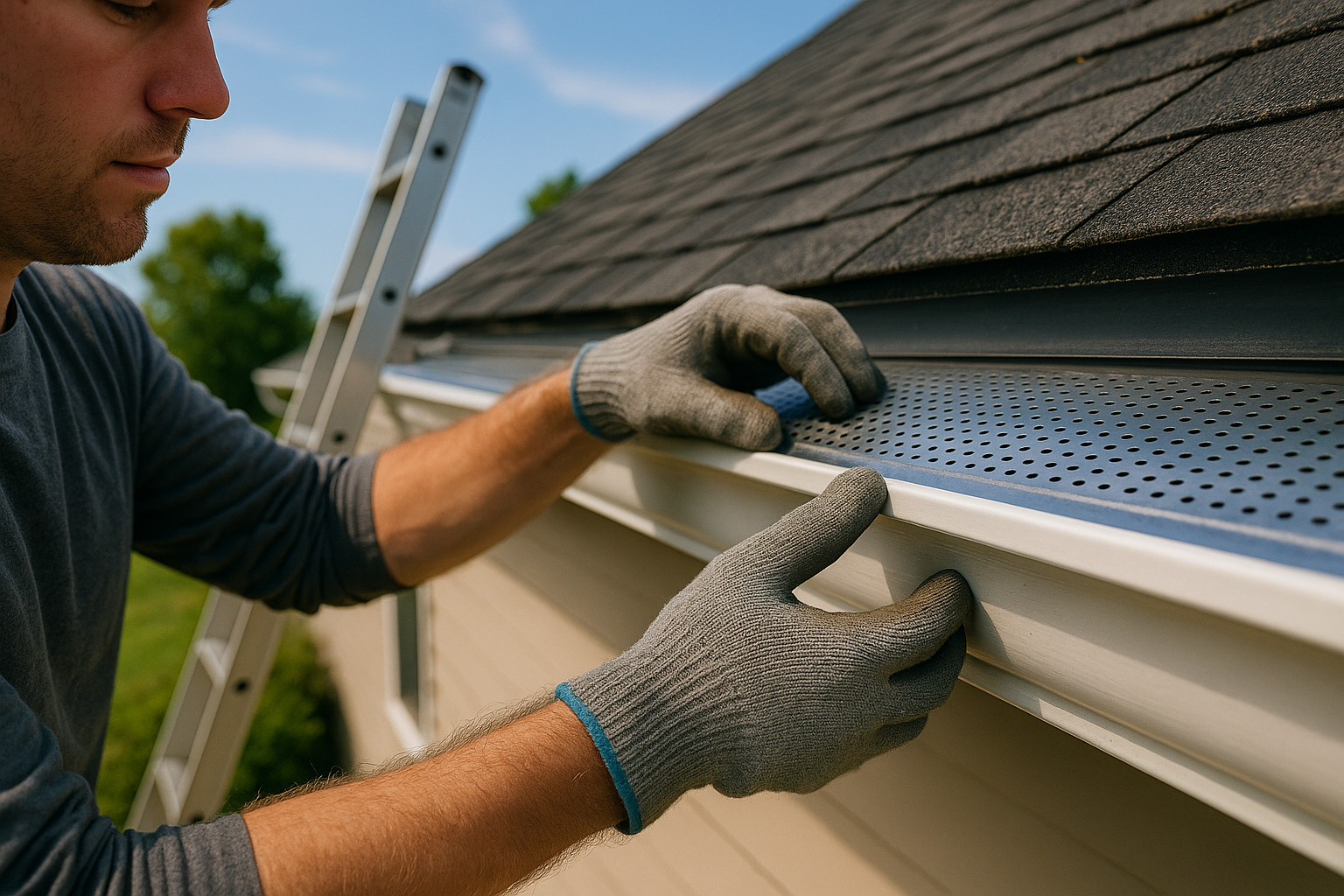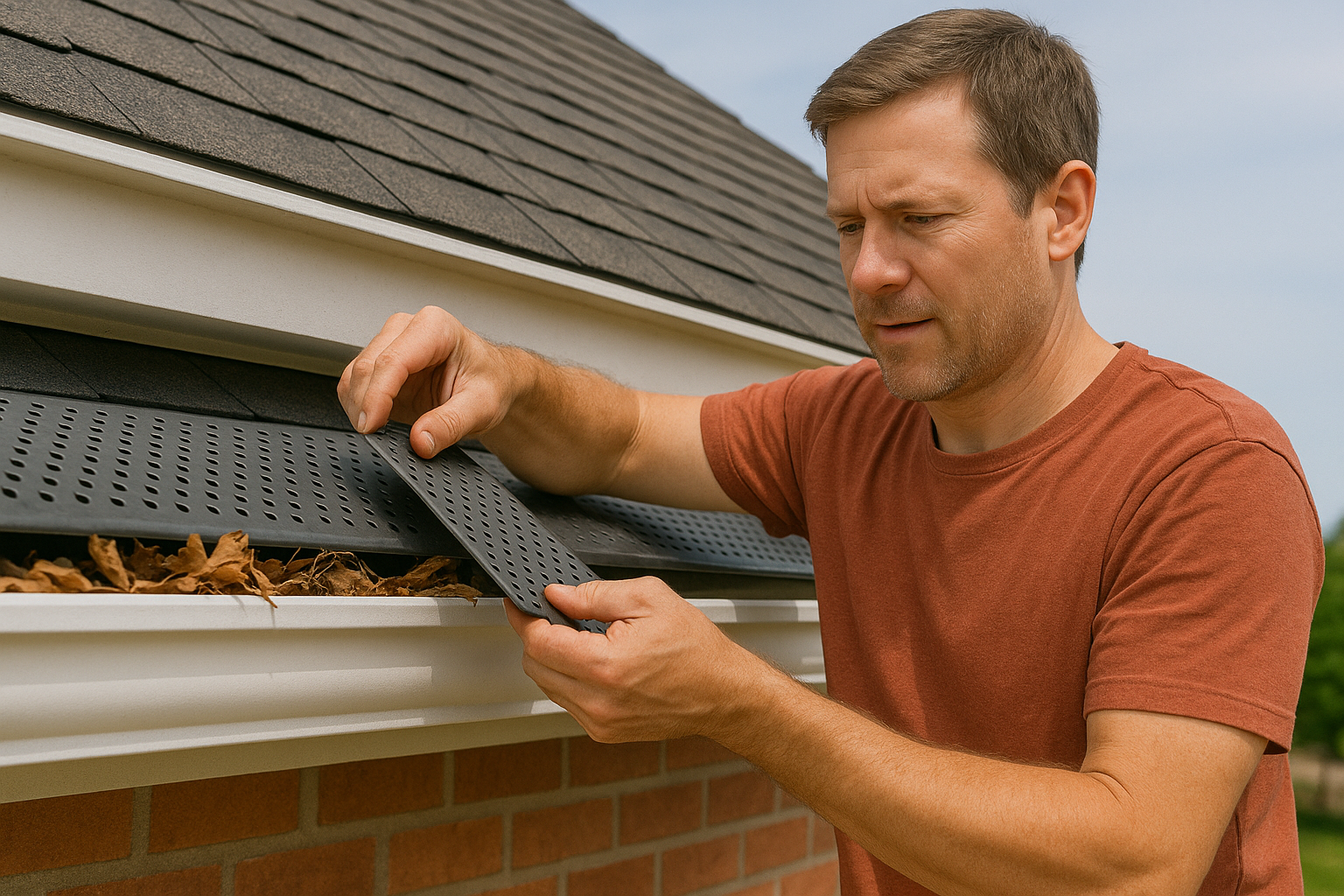Do Gutter Guards Cause Ice Dams on Your Roof?
When the snow piles up and the icicles start to dangle like decorations gone rogue, homeowners know what’s coming—ice dams. These silent winter bullies can wreak havoc on your roof, ruin insulation, and lead to serious water damage. One major question gets tossed around every cold season: Do gutter guards cause ice dams?
Let’s pull back the curtain on this frosty mess. We’re breaking down what causes an ice dam, how gutter guards factor in, and how to prevent them. Whether you're dealing with a metal roof, clogged gutters, or just trying to keep your attic dry, this article has your back.
Key Takeaways
- Ice dams form when melted snow hits a colder section of the roof and refreezes, causing water backup.
- Gutter guards don't directly cause ice dams, but poor installation and the wrong type can contribute.
- A well-chosen gutter protection system (like micro-mesh) can actually prevent ice problems.
- Attic insulation, roof ventilation, and regular gutter maintenance all play a role in ice dam prevention.
- Homeowners should pair the right gutter with the right protection system for winter conditions.
What is an Ice Dam, and How Does It Form?
An ice dam is a ridge—literally, a thick layer of ice—that builds up at the edge of a roof during winter. It happens when indoor heat rises, warming the roof and melting snow. That water flows down until it hits a colder spot near the eave, where it refreezes. Over time, this creates a ridge of ice that forms a barrier, blocking additional melted snow from draining.
Now that blocked water? It’s not just annoying—it’s destructive. It can seep under shingles, soak into the attic, and leave behind mold and mildew. One square cubic foot of ice weighs nearly 60 pounds. Imagine that pressure across several feet of your gutter system.
Do Gutter Guards Help or Hurt?
Here’s where things get complicated. Gutter guards are supposed to make life easier. They’re meant to stop debris from piling up and clogging your gutters. In dry or rainy climates, they’re a blessing. But when winter weather rolls in, it’s a different story.
Some say gutter guards cause ice dams, pointing fingers at their structure. For example, reverse curve designs can create a frozen ledge, especially when snow and ice settle on top. If the front of the nose is still frozen, any melted snow has nowhere to go. Water backs up and—you guessed it—an ice dam forms.
That said, not all gutter guards are villains. Many guards are designed with winter in mind, especially micro-mesh models that can better handle freeze-thaw cycles. The real key is matching the right type of gutter protection to your climate and roof style.
The Role of the Roof in Ice Dam Creation
Your roof isn’t just a hat for your house—it’s the first line of defense. But when poorly managed, it’s also the primary cause of ice dam problems. Most issues start in the attic. When warm air leaks upward, it warms up exposed portions of the roof, triggering the snow melts effect. Water travels down and then hits the unheated section—then boom—refreezes.
In homes without proper attic insulation or ventilation, this happens all winter long. A hot upper attic and a cold roof edge are the perfect combo for ice chaos. If your roof’s edges are constantly frozen while the top is clear, you're dealing with a temperature imbalance. And this imbalance will keep ice dams from forming—again and again.
Gutter Guards and Ice Dams: What’s the Link?
Let’s cut to the chase: Do gutter guards lead to ice dams?
The answer is… maybe. They don’t cause them outright, but certain conditions make them more likely to contribute. If your gutter gets blocked by debris or snow piles up over a gutter guard, it could slow water drainage. If the gutter guard doesn’t let water flow freely, especially in the freeze-thaw window, that pooled water becomes a frozen ridge.
If you’re wondering which type of gutter guard might be better in the cold, here’s a clue: Micro-mesh or aluminum gutter guard covers work better than reverse curve gutter systems in cold zones. Some gutter guards help more than others, depending on how well they handle ice and snow melt.
So yes, gutter guards and ice dams can be connected—but they’re not enemies unless installed poorly or chosen without winter in mind.
Can Metal Roofs Reduce Ice Dam Problems?
If you have a metal roof, you may already be a step ahead. These sleek, smooth surfaces are far less likely to hold onto snow and ice. When the sun hits the surface or when warm air rises, the snow melts and slides off instead of pooling. This can help prevent ice dams or at least reduce their size and duration.
That said, a metal roof doesn’t make you immune. If gutter guards underneath it are trapping ice, you're still at risk. That’s why pairing a metal roof with a smart gutter protection system makes a lot more sense. Keep the snow sliding off, but also keep the gutter clear so nothing gets stuck during a freeze.
Ice Dams Can Lead to Serious Damage
Let’s not sugarcoat it. An ice dam can destroy more than just the roof. It can rot the edges, ruin insulation in the attic, and even push water to enter your home. Wet ceilings. Damaged walls. And a whole bunch of repair bills.
Ice dams may not look like a big deal at first—just some pretty icicles, right? But over time, they cause damage to the home, especially in older houses with patchy attic insulation or weak shingles. And don’t forget—if water makes its way into your indoor space, you’re not just dealing with rot. You’re battling mold, mildew, and even warped flooring.
How to Prevent Ice Dams the Smart Way
You’ve got more control than you think. First, don’t skimp on attic insulation and ventilation. If heat rises to the attic but can’t escape, it turns the top of your roof into a melting machine. Fix that, and you're halfway to victory.
Next, think ahead: installing a gutter protection system with winter in mind. Choose gutter guards that allow melted snow to pass through without buildup. Some homeowners use cables or heated systems to prevent freezing altogether. Others simply use a roof rake after storms to clear the roof before ice takes hold.
If you're planning upgrades, look for a gutter installation service that uses durable materials and is a good match for your climate. Better yet, if you're going DIY, check out how to install gutters properly.
Choosing the Right Gutter Guard for Cold Climates
So what’s the right gutter setup? There’s no one-size-fits-all. But in places with tough winters, your best bet is a micro-mesh screen or perforated aluminum top. These allow drainage while blocking debris, and they’re less likely to freeze over entirely.
Avoid systems that rely on water surface tension, like some reverse curve covers, because when ice and snow sit too long, the opening clogs, and you’re stuck. Also, stay away from bulky guards that trap ice accumulation.
The gutter guards for your home should be low-profile, snug-fitting, and capable of handling both melt and refreeze. Add attic insulation, monitor your roof’s condition, and make sure your gutters don’t back up. That’s your cold-weather insurance policy right there.
Maintenance Tips to Survive Winter Weather
Here’s your winter checklist:
- Use a roof rake to remove heavy snow after storms.
- Inspect your gutters and gutter guards regularly for clogs or debris.
- Make sure your attic is sealed and insulated.
- Install heat cables in areas prone to ice buildup.
- Keep a lookout for early signs—icicles, frozen overhangs, and slow draining.
If it looks like the gutter guard is causing pooling or if your gutter has overflowed after melted snow, it’s time to inspect. Don’t wait until a refreeze locks in damage.
Frequently Asked Questions
Do all gutter guards cause ice dams?
Not all gutter guards are to blame. Problems typically come from poor installation, incompatible designs, or lack of attic insulation. The right type of gutter guard, like micro-mesh, can actually reduce the chance of ice dams.
Can ice dams damage my home?
Absolutely. They can push water under shingles, into the attic, and even down into walls and ceilings. Long-term exposure leads to mold, rot, and insulation problems.
Will installing a metal roof stop ice dams?
A metal roof can help since snow slides off more easily. However, without proper insulation or the right gutter system, ice dams can still form.
Conclusion
Winter doesn’t have to be a disaster waiting to happen. With the right tools and a bit of planning, you can stop ice dams before they ever get a grip on your roof. Choose the right gutter guard, reinforce your attic insulation, and pay attention to your gutter maintenance routine.
Looking to upgrade your setup?
Our gutter installation team is here to help with expert options built for every season.
Reach out now for a hassle-free quote and give your home the protection it deserves—no hidden fees, no waiting, and a fair, fast cash offer on service.





